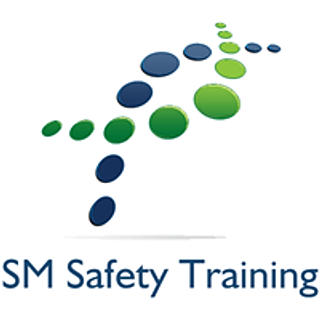The £5 Billion Question: Can You Afford to Ignore Stress at Work?
- steven mullan
- Aug 28
- 4 min read
written by Steve Mullan CertIOSH 28/08/2025
Workplace stress is often described as the silent epidemic, and the numbers prove it. The Health and Safety Executive (HSE) reports that in 2023/24, 776,000 workers in the UK were suffering from stress, depression, or anxiety caused or made worse by work. This accounted for 16.4 million working days lost, the single biggest contributor to absenteeism. On average, each affected worker took 21 days off, nearly a working month gone. https://www.hse.gov.uk/statistics/overview.htm
That’s not just inconvenient, it’s devastating for individuals, their families, and the organisations they work for.

Pressure vs Stress: What’s the Difference?
Pressure itself isn’t bad. In fact, healthy levels of pressure can motivate, energise, and sharpen focus. Think of a deadline that pushes you to finish strong.
But when pressure becomes excessive, relentless, or unmanageable, it crosses the line into stress. HSE defines stress as “the adverse reaction people have to excessive pressures or other demands placed on them at work.”
The key is balance. Too little pressure leads to boredom and disengagement. Too much pressure, without the right support, tips into damaging stress. https://www.hse.gov.uk/stress/index.htm
The Most Common Causes of Work-Related Stress
The HSE has identified six Management Standards, workplace factors most likely to cause stress if not managed well:
Demands – High workload, tight deadlines, unrealistic expectations, poor work environments.
Control – Having little or no say in how work is done.
Support – Lack of encouragement, resources, or guidance from managers and colleagues.
Relationships – Conflict, poor communication, or bullying.
Role – Unclear responsibilities or conflicting job expectations.
Change – Poorly managed organisational change, lack of consultation, or sudden restructuring.
When these areas are ignored, stress levels rise sharply across teams and individuals.

Additional read: Managing Stress at work
Spotting the Warning Signs
Stress often creeps in quietly before it becomes overwhelming. Some of the key signs include:
Individuals: mood swings, withdrawal, lack of motivation, loss of confidence, being tearful, irritable, or aggressive, persistent fatigue, frequent absences.
Teams: higher turnover, more sickness absence, rising grievances, presenteeism (turning up ill but unproductive), and declining performance.
Unchecked stress doesn’t just make people unhappy, it damages health. Prolonged stress can trigger anxiety, depression, insomnia, high blood pressure, and even long-term conditions like heart disease.
The Impact on Businesses
The effects ripple far beyond the individual. For businesses, stress translates into:
Lost productivity – Over 16 million lost working days a year.
Financial losses – Stress and poor mental health cost the UK economy billions annually.
High turnover – Burned-out staff leave, creating costly recruitment and retraining cycles.
Reputation damage – Businesses known for poor wellbeing struggle to attract talent and keep customers.
Legal risks – Employers have duties under the Health and Safety at Work Act 1974, the Management of Health and Safety at Work Regulations 1999, and even the Equality Act 2010 to manage stress effectively.
In short, failing to manage stress is bad for business, and the law won’t look kindly on neglect.

The Human Cost
Behind the statistics are real people, parents missing family milestones, workers struggling silently, teams breaking under strain. Stress doesn’t clock out at 5pm. It follows employees home, affecting relationships, sleep, finances, and overall quality of life.
And it doesn’t affect everyone equally. Research shows that women are more likely than men to report stress-related absence, especially women over 55, who often juggle work, caregiving, and health challenges. Meanwhile, many men “soldier on,” increasing long-term health risks.
Turning the Tide: Managing Stress with the HSE Standards
The good news? Stress can be managed, just like any other workplace risk. The HSE’s Management Standards provide a clear framework:
Identify risks – Use surveys, focus groups, or HSE tools like the Stress Indicator Tool.
Assess risks – Look at the six key areas (Demands, Control, Support, Relationships, Role, Change).
Plan actions – Prioritise, assign responsibility, and communicate clearly.
Implement interventions – This might mean workload reviews, better communication, more training, conflict resolution, or wellbeing policies.
Monitor and review – Check what’s working, adapt where needed, and commit to continuous improvement.
This approach is proactive, preventative, and proven to work.
Why Training is the Key
Recognising the signs of stress and knowing how to act isn’t always intuitive, that’s where training comes in. Building competence at leadership and management level is crucial. Managers who understand stress can intervene early, support their teams more effectively, and mitigate the risks of burnout and absenteeism.
Your Next Step: NEBOSH HSE Managing Stress at Work Course
If you want to move beyond awareness into action, the NEBOSH HSE Certificate in Managing Stress at Work is designed for you.
It’s a one-day course packed with practical tools and strategies.
You’ll explore causes, effects, and solutions to workplace stress, aligned with the HSE’s Management Standards.
You’ll learn how to carry out stress risk assessments, manage difficult conversations, and design interventions that actually work.
The day finishes with a 20-question assessment, giving you a recognised qualification the same day.
This isn’t just training, it’s an investment in your workforce, your business, and your own leadership.
We are a NEBOSH Gold learner partner, so you can be assured you will receive the best training avaliable

Final Thought
Stress at work is real, costly, and harmful, but it’s also preventable. The question isn’t “Can we afford to manage it?” but “Can we afford not to?”
By understanding the difference between pressure and stress, spotting the early warning signs, and applying structured approaches, you can protect your people and strengthen your business.
Take the first step today, equip yourself and your team with the knowledge, tools, and confidence to manage stress effectively.
👉 Book your place on our NEBOSH HSE Managing Stress at Work course and lead the change towards healthier, happier, more resilient workplaces.
More info: download this PDF file





Comments